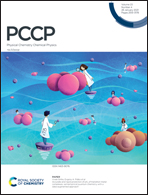Tandem solar cells efficiency prediction and optimization via deep learning†
Abstract
Optical design plays an important role in improving the performance of opto-electronic devices. However, conventional design processes using finite difference time domain (FDTD) or finite element methods are usually time and computing resource consuming, and often result in sub-optimal solutions due to an incomplete search of the parameter state space. In this paper, we propose a deep learning approach to predict and optimize the cell performance of perovskite/crystalline-silicon (c-Si) tandem solar cells. In particular, a deep neural network is established to predict the achievable short-circuit current for tandem solar cells with a given cell structure. After training on a FDTD numerical simulation data set, the proposed deep neural network achieves an accuracy of 98.3% and micro-second grade simulation time, which is an ultra-fast, highly accurate and computing resource-saving solution to investigate the current properties of tandem solar cells. Heuristic algorithms are further adopted to inversely optimize the device structure, where the optimal set of layer thicknesses is obtained to maximize the achievable short-circuit current. According to the calculated projected efficiency, the expected experimental short-circuit current and power conversion efficiency of tandem solar cells with the optimal selection of layer thickness can reach 15.79 mA cm−2 and 23.24%, which is improved by 14.42% and 28.4%, respectively, compared to the benchmark cells.



 Please wait while we load your content...
Please wait while we load your content...